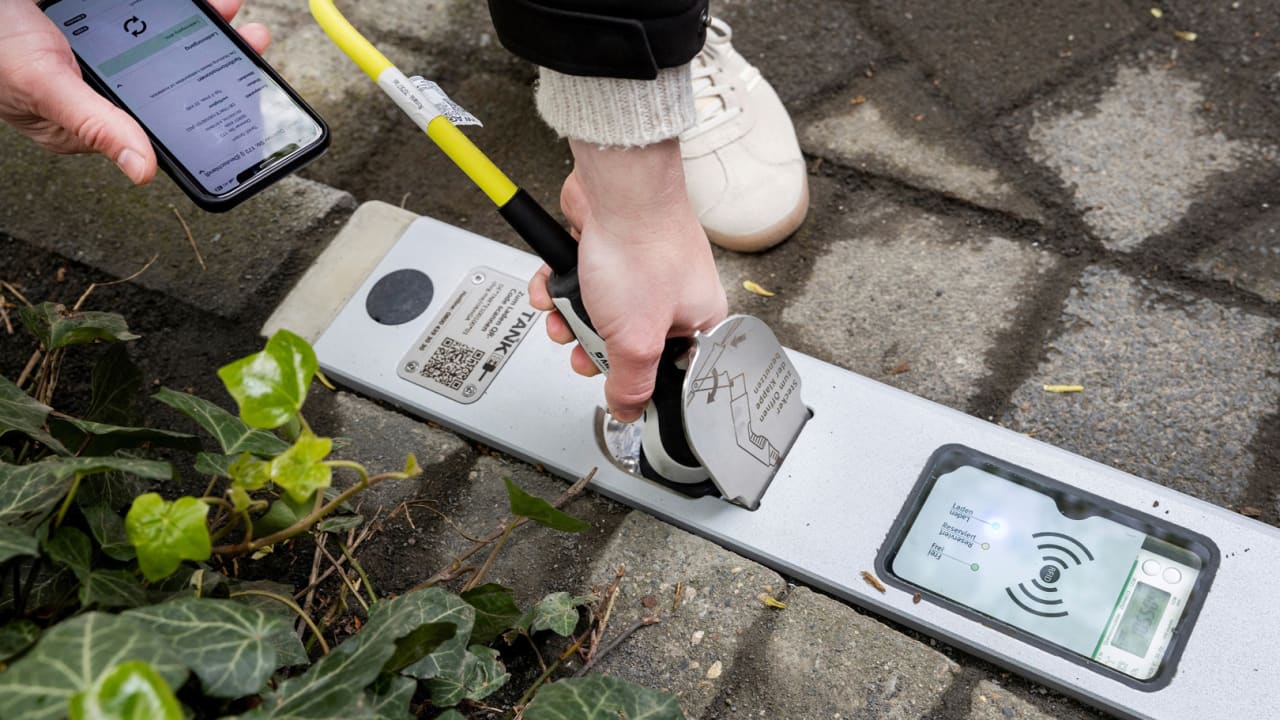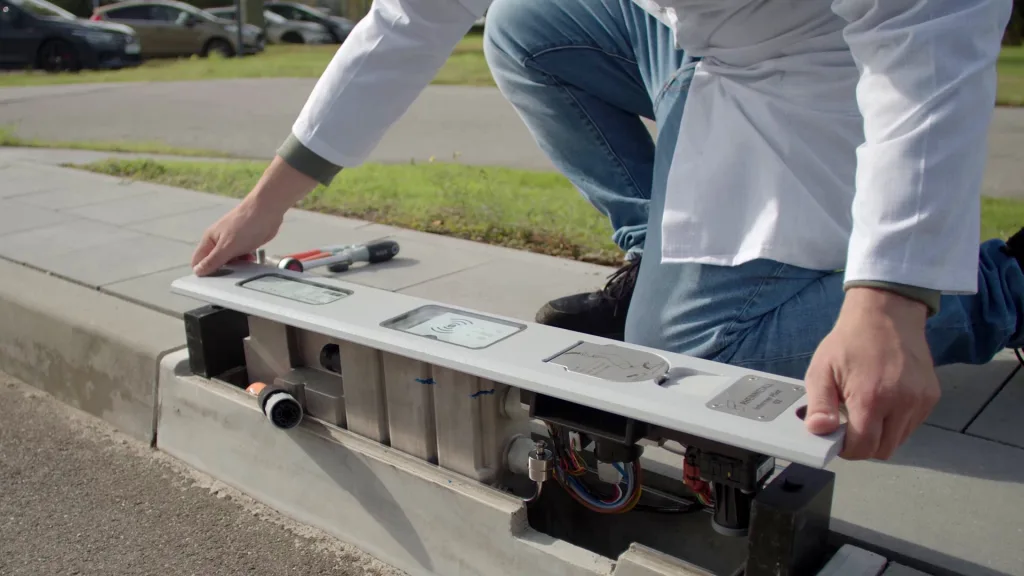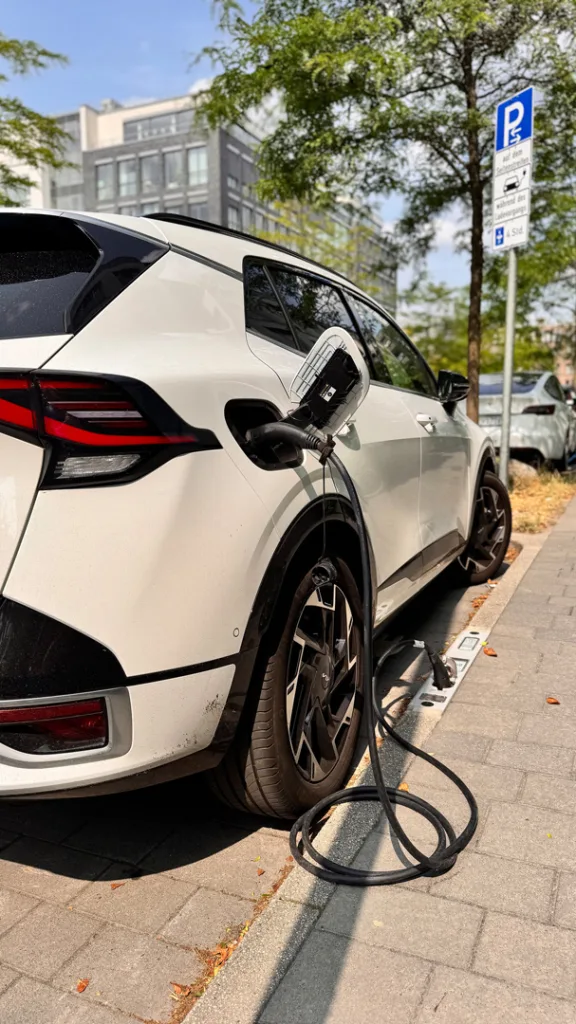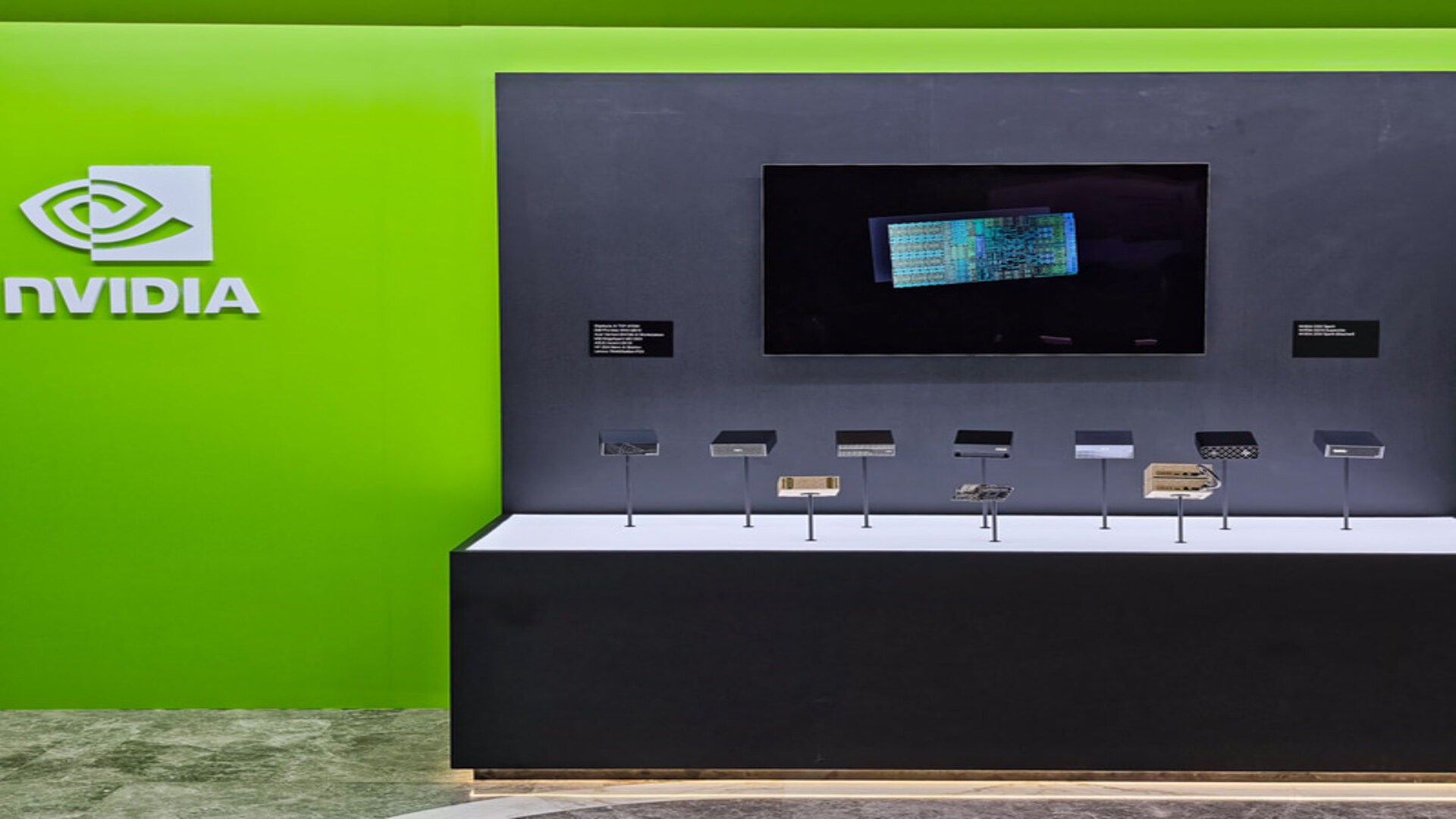Can you find this sidewalk EV charger? It’s hiding inside the curb
A typical EV charger in the U.S. is a bulky, 6-foot-tall box in a parking lot. In Germany, a startup is rolling out a new type of charger that looks very different: Called the Curb Charger, it fits seamlessly inside a curb at the edge of a street. The Curb Charger “upgrades existing urban infrastructure and adds hardly any additional street furniture to cities,” says Felix Stracke, vice president of new mobility at Rheinmetall, the company that designed the charger. (Rheinmetall’s primary business is defense manufacturing—the $80 billion company is the largest arms manufacturer in Germany—but it diversified into EV charging when it saw the opportunity for growth.) For an apartment dweller who parks their car on the street, having curbside charging suddenly makes it much easier to own an EV. Instead of driving to a store and waiting while the car charges, it’s possible to plug in overnight or when the car would otherwise be parked for hours. It also makes slow charging feasible, which helps EV batteries last longer and is less of a strain on the grid. [Photo: Rheinmetall] Larger chargers don’t necessarily fit well on a curb. On a narrow sidewalk, they can take up too much space; they’re at more risk of vandalism; they can also block views and change the visual identity of a historic neighborhood. But the scaled-down design of the new chargers is nearly invisible. That invisibility is also a challenge, since drivers can’t quickly spot a charger. But an app can be deployed to direct someone to the nearest charging point. Other companies have taken different approaches to curbside charging, including making chargers that double as streetlights or packaging them in a sleek box that looks better than a conventional charger and is easier to install. [Photo: Rheinmetall] The Curb Charger sits inside a case that’s exactly the same size as a standard German curb. (The size can be adjusted for other locations.) It’s strong enough that a heavy truck can drive over it, and it’s waterproof, so the system can keep working in heavy rain. Drivers activate it through an app or by scanning a QR code. It does require that drivers have their own charging cord, though that’s standard in Europe. Rheinmetall says the equipment doesn’t cost more than a conventional charging station, and the small size means that installation can be simpler and cost less. If a charger needs repair, the charging module can be swapped out, making maintenance less expensive as well. When streets have major repairs, they could potentially be rebuilt with the hollow curb cases, ready to add the charging equipment as needed. In a yearlong pilot in the city of Cologne, the chargers were used nearly 3,000 times through all weather conditions, staying online 99% of the time. Users gave them high ratings. Now, Rheinmetall is scaling up production and beginning new installations in other cities.

A typical EV charger in the U.S. is a bulky, 6-foot-tall box in a parking lot. In Germany, a startup is rolling out a new type of charger that looks very different: Called the Curb Charger, it fits seamlessly inside a curb at the edge of a street.
The Curb Charger “upgrades existing urban infrastructure and adds hardly any additional street furniture to cities,” says Felix Stracke, vice president of new mobility at Rheinmetall, the company that designed the charger. (Rheinmetall’s primary business is defense manufacturing—the $80 billion company is the largest arms manufacturer in Germany—but it diversified into EV charging when it saw the opportunity for growth.)
For an apartment dweller who parks their car on the street, having curbside charging suddenly makes it much easier to own an EV. Instead of driving to a store and waiting while the car charges, it’s possible to plug in overnight or when the car would otherwise be parked for hours. It also makes slow charging feasible, which helps EV batteries last longer and is less of a strain on the grid.

Larger chargers don’t necessarily fit well on a curb. On a narrow sidewalk, they can take up too much space; they’re at more risk of vandalism; they can also block views and change the visual identity of a historic neighborhood. But the scaled-down design of the new chargers is nearly invisible. That invisibility is also a challenge, since drivers can’t quickly spot a charger. But an app can be deployed to direct someone to the nearest charging point.
Other companies have taken different approaches to curbside charging, including making chargers that double as streetlights or packaging them in a sleek box that looks better than a conventional charger and is easier to install.

The Curb Charger sits inside a case that’s exactly the same size as a standard German curb. (The size can be adjusted for other locations.) It’s strong enough that a heavy truck can drive over it, and it’s waterproof, so the system can keep working in heavy rain. Drivers activate it through an app or by scanning a QR code. It does require that drivers have their own charging cord, though that’s standard in Europe.
Rheinmetall says the equipment doesn’t cost more than a conventional charging station, and the small size means that installation can be simpler and cost less. If a charger needs repair, the charging module can be swapped out, making maintenance less expensive as well. When streets have major repairs, they could potentially be rebuilt with the hollow curb cases, ready to add the charging equipment as needed.
In a yearlong pilot in the city of Cologne, the chargers were used nearly 3,000 times through all weather conditions, staying online 99% of the time. Users gave them high ratings. Now, Rheinmetall is scaling up production and beginning new installations in other cities.




















































![[Weekly funding roundup May 31-June 6] VC inflow continues to remain stable](https://images.yourstory.com/cs/2/220356402d6d11e9aa979329348d4c3e/WeeklyFundingRoundupNewLogo1-1739546168054.jpg)








































































































































